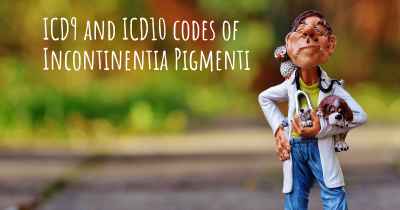What is the history of Incontinentia Pigmenti?
When was Incontinentia Pigmenti discovered? What is the story of this discovery? Was it coincidence or not?

Incontinentia Pigmenti (IP) is a rare genetic disorder that primarily affects the skin, hair, teeth, and central nervous system. It was first described in medical literature in 1906 by the Austrian dermatologist Dr. Garrod, who named the condition "incontinentia pigmenti" due to the characteristic skin pigmentation changes observed in affected individuals.
The history of Incontinentia Pigmenti dates back to the early 20th century when Dr. Garrod encountered a young girl with distinct skin abnormalities. He noticed a pattern of skin discoloration that followed the lines of Blaschko, which are invisible lines that represent the migration of cells during embryonic development. Dr. Garrod recognized that this condition had a genetic basis and was inherited in an X-linked dominant manner, meaning that it predominantly affects females and is passed on by their affected fathers.
Over the years, further research has shed light on the underlying genetic cause of Incontinentia Pigmenti. In 1996, the gene responsible for the disorder was identified and named IKBKG (Inhibitor of Nuclear Factor Kappa B Kinase Regulatory Subunit Gamma). Mutations in this gene are responsible for the characteristic symptoms of IP.
Individuals with Incontinentia Pigmenti typically exhibit a range of symptoms that manifest in distinct stages. The first stage, known as the vesicular stage, occurs shortly after birth and is characterized by blister-like skin lesions. These lesions may be painful and can affect various parts of the body. As this stage progresses, the skin lesions gradually evolve into a second stage called the verrucous stage. Here, the blisters become warty and hyperkeratotic, resembling raised, rough patches of skin.
During the third stage, known as the hyperpigmented stage, the skin lesions begin to fade and leave behind areas of increased pigmentation. These pigmented patches can vary in color, ranging from light brown to dark brown, and often follow the lines of Blaschko. The final stage, called the hypopigmented stage, involves the development of pale or white patches of skin in the areas previously affected by hyperpigmentation.
Aside from skin manifestations, Incontinentia Pigmenti can also affect other systems in the body. Dental abnormalities, such as delayed tooth eruption, missing teeth, or malformed teeth, are common in individuals with IP. Additionally, abnormalities in the eyes, hair, nails, and central nervous system can occur. These neurological abnormalities may include seizures, intellectual disability, developmental delays, and vision problems.
Since its initial discovery, the understanding of Incontinentia Pigmenti has significantly advanced. Genetic testing is now available to confirm the diagnosis by identifying mutations in the IKBKG gene. This has allowed for improved management and counseling of affected individuals and their families.
While there is currently no cure for Incontinentia Pigmenti, treatment focuses on managing the symptoms and complications associated with the disorder. This may involve a multidisciplinary approach, including dermatologists, ophthalmologists, dentists, and neurologists, to address the various aspects of the condition.
In conclusion, Incontinentia Pigmenti is a rare genetic disorder that was first described in 1906. It is characterized by distinct stages of skin abnormalities, dental issues, and potential neurological complications. The identification of the IKBKG gene in 1996 has greatly contributed to our understanding of the disorder. Although there is no cure, advancements in genetic testing and multidisciplinary management have improved the quality of life for individuals with Incontinentia Pigmenti.
Posted Jun 4, 2018 by Amy 100








